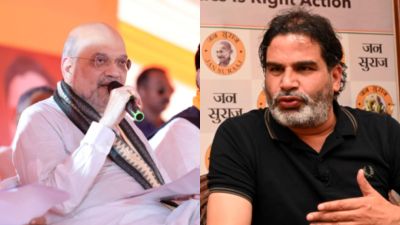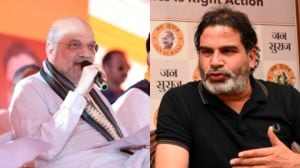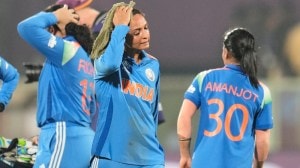Go Girl, GO!
...

It’s an unnervingly uphill trudge. Precariously steep, sole-shocking stony, and much much longer to the shortening breath than the over five kilometers it measures. Yet, eight little girls from Arley Sheel village make this trek daily with a determined ease they’ve taught themselves. For they know they must cover distances, clear hurdles, crawl even, do whatever it takes really, to get atop. To their school at Jagjit Nagar. And as they finish their climb each day, every time, India soars…
Yes, it’s a tale of ascent this. Set in our country where less than nine per cent women were lettered when the first post-Independence census was conducted in 1951. Just five decades on, in 2001, the same demographic exercise—allowing for differences in methodology—counted over 54 per cent of our women as literate. Himachal Pradesh recorded one of the highest growth rates at having lettered its women—a remarkable 67 per cent women in this state were now literate. And village Arley Sheel, hidden deep inside the pine-shrouded folds of Himachal’s hills in Solan district, reveals the desire, the drive of a people who have rallied to make these power numbers.
Every daughter of Arley Sheel, preen the villagers, goes to school. It’s pride that’s become conviction: “Girl or boy, being matriculate at least is a must. Even if their ears need pulling to make it happen.” Quite a tweak that to rural reality in many parts of India where girls are routinely pulled out of school after class V because middle schools, unlike primary schools, are often in far-flung areas—and within reach of only sons. But not so at Sheel, and never so now. The last girl dropout is some 17 years old today, the villagers dismiss uneasily as people do embarrassing truths: “Twenty eight families make up our village, eight of our girls are of middle school age, and they’re all in class.”
Bashful tall Dimple and impish small Madhu are the most recent graduates into ‘big’ school. The first too shy to share how much she scored to get to class VI. The second blithely forgetful of her own marks, but this not without bragging in a whisper: “Dimple got 229 out of 300!” Because, on their unsteady sojourn to school, this sisterhood has learnt to enjoy the constancy of achievements shared. “We help each other with studies,” makes one known. “Also share housework if one of us has a lot of homework.” Pipes in another precociously: “Some of us wanted to be nurses, then we talked and decided on being doctors.”
Aspiration upscale is, after all, what the girls emulate of their elders. “I could only count chapattis, so I wanted a bahu who could count numbers,” eightysomething Kalavati Devi, amma to all, laughs toothlessly. Class IX pass Reeta Devi, amma’s wish fulfillment, is currently a ward member in the panchayat. And Reeta’s daughter, Champa, in class VIII now, is adamant about teaching after graduation. Amma cracks up under the weight of her own joke: “Women today have grown from counting chapattis to earning chapattis.”
Shankar Dev Sharma, head, Middle School Jagjit Nagar, delinks the upsurge in girl child education to employment. Although 58 among his 110 students are girls, he is wary of putting a figure to how many of them will continue studies beyond class X, or take up jobs. “Though education for its own sake isn’t bad either,” he murmurs thoughtfully. But with Himachal’s sex ratio for the zero-to-six age group at a shameful 897 girls per 1,000 boys against the country’s 927, Subhash Mendhapurkar of SUTRA, an NGO that works for gender and governance in the state, wonders what value literacy when female foetuses are being aborted increasingly: “Getting children into classrooms isn’t enough, they have to be taught the right things there.” It’s an unnervingly uphill trudge. But Dimple and Madhu will get there. Amma’s blessings are with them.






- 01
- 02
- 03
- 04
- 05

























